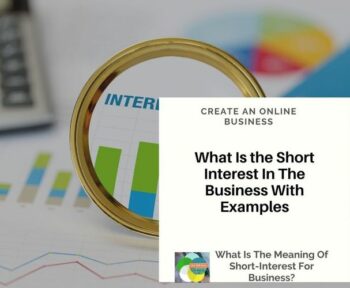The development of a fresh (opening) long call or put position in options is referred to as a “buy to open,” which is a term that is used by brokerages to denote the transaction. A new investor in options who wishes to buy a call or put should do so using the buy to open order type. When a trader places a buy-to-open order, it alerts other players in the market to the fact that the trader will be opening a new position rather than liquidating an existing one. The buy-to-open order is used to enter a position, while the sell-to-close order is used to exit the position.
The act of going short for the first time is referred to as selling to open, and the position would be closed out by placing a buy-to-close order. A new investor in options who wishes to sell a call or a put should do it using the selling to open strategy.

Understanding Buy to Open Orders.
When it comes to trading options, the language for “buy” and “sell” is not as clear cut as it is when dealing with stock trading. When trading options, traders are required to make a decision between “buy to open,” “buy to close,” “sell to open,” and “sell to close” rather than just placing a buy or sell order as they would when trading stocks.
A buy-to-open position may give other market players the impression that the trader who initiated the order has a preconceived notion about the market or is trying to forward their own agenda.
This is especially the case when the order is on the big side. Nevertheless, there is no necessity for that to be the situation. In point of fact, traders in options commonly partake in activities known as spreading or hedging, which include offsetting current positions with a purchase to open position.
Because the exchange may decide that during certain market conditions, only closing orders can be executed, a buy-to-open order may not be given the chance to be carried out as intended.
This could occur if a stock that currently has accessible options is removed from a stock exchange’s listing or if the exchange suspends trading in the stock for a prolonged period of time.
Considerations Regarding Stock
The phrase “purchase to open” can also be used to refer to purchasing stocks. When an investor makes the decision to begin a new position in a certain stock, the initial purchase the person makes is referred to as a “buy to open” transaction since it begins the position.
The stock is added as a holding to the portfolio when the position is opened, which establishes ownership of the stock. The position will stay open until all of the shares are sold, at which point it will be closed out.
This strategy is referred to as selling to close since it ultimately results in the position being closed. When you sell a partial stake, it signifies that some of the stocks have been sold but not all of them. When there are no more shares of a certain stock in a portfolio, a position is deemed to have been closed.
When covering a short-sell position, buy-to-close orders are another factor that come into play. When closing out a short-sell position, the broker will lend the shares to the investor, and then the investor will buy the shares back on the open market.
The buy-to-close order refers to the final transaction that must take place in order to entirely close out the position. The risk is no longer there as a result of this transaction.
The goal is to earn a profit from the difference in price between the short-sell price and the buy-to-close price by purchasing the shares back at a lower price than they were originally sold for.
In situations in which the price of the underlying share rapidly increases, a short-seller could be forced to make a loss-making purchase in order to avoid even bigger losses from arising.
As a consequence of the broker making a margin call, the worst-case scenario involves the execution of a forced liquidation. After then, the broker would require that the investor deposit money into the margin account owing to the fact that there was a deficit.
Because there is not enough equity in the account, this would cause a buy-to-cover order to be generated in order to close out the position at a loss.
Buy to Open vs. Buy to Close.
If an investor wishes to profit from a price movement of the underlying securities by buying a call or a put option, then that investor must purchase to open.
When a speculator purchases an asset with the intention of opening a long options position, they are afforded the opportunity to make a potentially enormous profit while incurring just a marginal amount of risk.
On the other hand, the underlying asset needs to move in the desired direction within a predetermined amount of time; otherwise, the option will completely lose all of its value due to the passage of time.
Even while time decay gives sellers of options an edge over purchasers, such sellers could nonetheless wish to buy in order to close out their holdings.
When an investor sells options, the investor is still bound by the terms of the options until the expiration date, even if the options have been sold.
Changes in the price of the underlying asset, on the other hand, may encourage option sellers to reduce their losses or take a larger portion of their gains much early than expected.
Suppose someone sells at the money options that last for a year, and then after three months the underlying stock goes up 10 percent. This would be a loss for the person who sold the puts.
The option seller has the ability to purchase to close, which will allow them to obtain the majority of their gains immediately.
If instead the stock falls by 10 percent after three months, the options seller will be required to pay a higher price to purchase in order to terminate the position and minimize possible losses.
Simple Example Of The Buy To Open Strategy.
Assume a trader has done some research and has come to the conclusion that they anticipate the price of XYZ stock will increase from $40 to $60 over the course of the following year.
The trader can decide to purchase in order to open a call position on XYZ. It’s possible that the strike price will be $50, and the option will expire in roughly a year from now.
Key Points
When traders want to open positions in a certain option or stock, they will often utilize a buy-to-open order.
A portfolio’s other risks can be neutralized or hedged against by buying to start a position in options.
A buy-to-open position in options trading has the chance for substantial returns while limiting losses, but it also carries a significant danger of becoming worthless before its expiration date.
FAQs
When an options trader opens a long position, they are said to have “buy to open,” which is an industry term. When a short options position is closed, it is referred to as buy to close. It is absolutely necessary for successful options trading to have a solid understanding of the distinction between buy to open and buy to close.
When a trader has an open position in which they are net short an option and they wish to close out that position, they will use the term “buy to close.” To put it another way, they have already established an open position by the writing of an option, an action for which they have been awarded a net credit, and they are now working to close out that position.
What Does It Mean to Buy to Cover? A buy order placed on a stock or other listed security with the intention of covering an existing short position is referred to as “buy to cover.” A short sale is when an investor sells shares of a firm that they do not own because the investor has borrowed the shares from a broker and will need to repay the broker at some point in the future.








![Why Does Need to Change In Structure of Organizations?[Revealed] Why Organizational Change Important](https://thesmbonline.com/wp-content/uploads/2022/12/Why-Organizational-Change-Important-e1671578088451-150x150.jpg)
